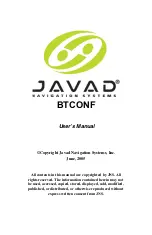
Chapter 3 - Using the Controls
Page 3-2
961 Operations and Reference Manual Rev. D
More navigation terminology
Some users who are new to navigation may find unfamiliar
terms in this chapter; these terms have a special meaning
throughout the manual. Highlight Two defines several naviga-
tion expressions with which experienced navigators may
already be familiar.
Highlight Two: More navigation terms
ARCS:
Admiralty Raster Chart Service. The elec-
tronic chart service designed by the United King-
dom Hydrographic Office (UKHO).
Course line
: A line of travel from your present posi-
tion to your upcoming (active) waypoint.
Differential GPS (DGPS):
A U.S. Coast Guard
(USCG)-developed system of GPS corrections that
further increases position accuracy (requires a
DGPS receiver). For more information, see Section
2, ”Introducing GPS and DGPS,” starting on page
2-13.
Hydrographic Chart Raster Format (HCRF):
A
chart format designed by the United Kingdom
Hydrographic Office, and used by ARCS (see
ARCS definition above).
Leg
: The line, or path, between two waypoints in a
route or a trip.
Nav aid
: Aids to navigation often used on
coastal and inland waters. Nav aids primarily
comprise buoys, lighthouses, and daymarkers,
and their purpose is to warn you of such hidden
dangers as underwater hazards, and to help
you safely navigate through specific waterways
and channels.
Trip
: A sequence of waypoints comprising
today’s journey—a record of waypoints (includ-
ing past, active, and future ones), coordinates,
and routes. The trip function provides a way to
check your actual progress, as well as make
changes, while you travel. On the
CHART
screen, the 961 color-codes your trip according
to its legs: the past leg of the trip is displayed in
yellow; the course line to the active waypoint is
displayed in green; and future trip legs are dis-
played in light blue.
Summary of Contents for 961X
Page 1: ...961 961 GPS Chart Navigator Operations and Reference Manual P N GM1700 Revision D X XD ...
Page 8: ...Page viii 961 Operations and Reference Manual Rev D ...
Page 10: ...Page x 961 Operations and Reference Manual Rev D ...
Page 58: ...Chapter 2 Introducing the 961 Page 2 16 961 Operations and Reference Manual Rev D ...
Page 172: ...Chapter 7 Creating Avoidance Points Page 7 16 961 Operations and Reference Manual Rev D ...
Page 198: ...Chapter 8 Creating Routes Page 8 26 961 Operations and Reference Manual Rev D ...
Page 262: ...Chapter 12 Alarms TideTrack and Currents Page 12 16 961 Operations and Reference Manual Rev D ...
Page 374: ...Index Page I 12 961 Operations and Reference Manual Rev D ...















































